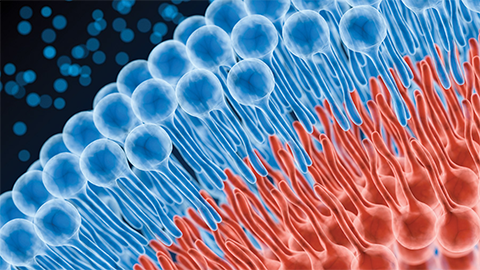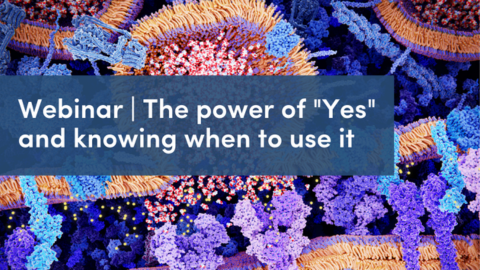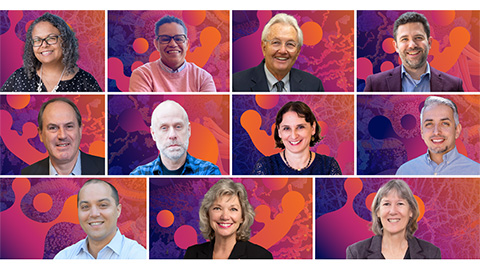Neurodiversity: How to make your lab more inclusive (part 1)
This week, I am writing for principal investigators who want to make their labs more inclusive to neurodiverse members. This is a two-parter. Today, I describe ways of thinking about neurodiversity in general. In the second part, I will provide examples of approaches for managing lab members with autism, depression, anxiety and attention disorders.
This article, notably, is not about how neurodiverse students can adapt to their workplaces. Rather, this is for PIs because they are responsible for the workplace environment.
I am not an expert in this, by any means, other than having been a Ph.D. student, who, like most people, had good and bad experiences. For this article, I have interviewed experts on inclusivity and neurodiversity and current and former Ph.D. students to learn what worked well or poorly for them.
Neurodiversity: What is it?
The term “neurodiversity” was coined in the late 1990s to present the idea that people with autism may be different in some ways but that autism is not necessarily pathological or wrong.
Over the years, the term has been expanded to include mental illnesses and neural differences, based upon the principle that all of these conditions should be regarded in the way physical disabilities are: They might come with a set of limitations, but they are not disqualifying and should not prevent people from having satisfying and productive careers.
In his 2010 book “Neurodiversity: Discovering the Extraordinary Gifts of Autism, ADHD, Dyslexia, and Other Brain Differences,” researcher Thomas Armstrong, who has depression, writes about how many mental illnesses come with strengths, though we might see the weaknesses first.
Armstrong emphasizes that having a positive niche at work is important. PIs play a role in creating these positive niches that will allow their lab members to flourish.
Dave Caudel, director of The Frist Center for Autism and Innovation at Vanderbilt University, is on the autism spectrum. He described neurodiversity in labs to me this way: “Neurodiversity: Now, that doesn’t mean someone’s a complete alien. It just means there are some aspects of their thought processes that are different. They think or communicate differently. And we all know that’s a good idea in a lab! We all want to find that one idea that breaks everything open.”
Having a neurodiverse lab can make that happen. “You get a diverse group of strengths, and the sum is better than the parts.”
But it can also cause problems, Caudel added, particularly if the PI expects everyone to think and operate the same way. That can shut people down and close off opportunities for all lab members to contribute their best.
Being intentionally inclusive, besides being a nice human thing to do, creates a work environment that allows everyone be more productive.
“I believe neurodiversity is the next frontier in diversity,” said Dan Tatar, founder and CEO of ADK Group, a website- and app-development group committed to hiring neurodiverse employees.
The PI–mentee relationship
A PI–mentee relationship is, in a way, even more intense than an average boss–employee relationship.
Sometimes, to me, it felt more like a marriage.
Under the right circumstances, the relationship can bring out the best in both people: creativity, inspiration and motivation. But, under less-than-ideal circumstances, the relationship can crush creativity, spirits and productivity.
Also, because of the power dynamic inherent in the PI–mentee relationship, in negative situations, the mentee is usually the one most hurt, most crushed. This relationship can make or break a Ph.D. student.
Studies show that the relationship a worker has with their boss has a huge effect on their emotional state and productivity, as does the management style.
All PIs I know would like to be the inspirational kind, bringing out the best in their mentees. No one I know says, “Yes, I’d love to make it harder than necessary for my lab members to get good work done.” But sometimes it ends up happening, often by default or lack of intentionality.
Labs can be so isolated that a PI has total control — intentionally or not — over the way the lab runs and the way it feels. This means PIs have a greater responsibility than the average mentor, boss or leader to be careful and intentional about the work environment they are creating.
This is an extremely difficult challenge given the many demands placed on a PI: grant writing, grant reviewing, paper writing, paper reviewing, teaching courses, serving on committees, attending conferences, giving seminars, keeping up with the literature, and then running the lab itself.
But, if the PI can create an inclusive environment, it should make things easier in the long run: Students and postdocs will be more productive and creative, and there will be fewer problems and crises down the line.
What does it mean to be an inclusive manager?
I emailed Bryan Dewsbury, a professor at the University of Rhode Island, who teaches biology courses and researches how inclusivity, bias, identity and relationships influence students’ engagement with the sciences. Here’s how Dewsbury described what inclusive mentorship means to him:
“Inclusively minded mentorship means that the mentor constructs a research experience that is cognizant of the conditions needed for the mentee to attain their full potential.”
He contrasted this with noninclusively minded mentorship: “In conventional university research structures, students join research labs and adapt to the extent they possibly can to an existent, sometimes static, research culture. Managing for inclusion means that one understands that there are various ways in which students can be effective contributors to the scientific process.”
Dewsbury continued: “It behooves the mentor to have a structure in place to understand and affirm the social realities of the student before determining what support structures are necessary for their success. This certainly puts mentorship into new territory for some, as it means better understanding the neurodiversity associated with today’s college students.”
He also pointed out that (especially relevant for this article) being inclusive means “not being oblivious to unseen disabilities.”
He explained: “Ultimately, the strategies for neurodiverse inclusion are aligned with the strategies for inclusion writ large, in that the first and most important step is to listen without judgement and commit to providing the student an opportunity to be their best selves, regardless of the efforts that may require on your behalf.”
Some key points and ways of thinking
As Dewsbury mentioned, this may be new territory for many PIs. Luckily, there are many good resources out there, and many people willing to give advice along the way. When speaking to people about this, I always asked, “What would you tell PIs who want to make their labs more inclusive but are not sure how to approach the idea?”
I found that conversations kept returning to a few points. They are:
1. See mentees as individual humans with different strengths and weaknesses and provide support for these differences to maximize their strengths.
Shira Mitchell, who works in political statistical analysis, told me about work environments that have supported her strengths.

“One of the most important things a team leader or supervisor can do is to recognize a diverse set of contributions. Not everyone is good at the same things, and people who aren't neurotypical tend to be very good at things that others aren't and maybe less good at things that are common,” she said. “For example, I'm horrible at task shifting and at getting things done quickly. But I have an outlier-level of patience for detail and careful analysis, so I can go through something with a fine-toothed comb and catch mistakes. My best work environments have seen that as an asset, being grateful when I catch problems and valuing caution over speed. Of course, sometimes things need to be pushed out quickly, and the benefit of a diverse team is that some people on the team excel at just that.”
Tatar at ADK Group noted that students may feel nervous or scared to talk about their strengths and weaknesses.

“Be human with your employees. Talk to them and be honest. If you say something like, ‘Oh, I’m so disorganized. It took me 15 minutes to find my keys this morning!’ that opens a door for honesty with your employees, and maybe they can feel comfortable opening up about what they feel their weaknesses are,” he said.
A Ph.D. student I know, who asked that I not use his name so I’ll call him Jack for our purposes, has depression and ADD. He has a great ability to think critically about science, but he is less able to do that when under pressure or fear.
“It helps a lot if the PI is understanding. If they are expecting something from you during the week, it would be nice if they are understanding that it sometimes doesn’t happen. Especially people who are sensitive to stress, like people with depression. It’s entirely counterproductive if it gets too stressful. I just shut down,” Jack said.
Encouragement is important, he told me. With it, he can come up with unique ideas for approaching scientific questions and for new methods.
“Having a PI who inspires you to be productive, saying encouraging and inspirational things is much more helpful,” Jack said. “One of the biggest things that demotivated me were experiments that don’t work. Having a PI who is approachable and helps troubleshoot and encourages you is important. Someone to help you see the light at the end of the tunnel, because it is so easy to lose perspective in science, and it’s so easy to get discouraged.”
2. Don't make assumptions about a mentee’s behavior, and give the benefit of the doubt when something seems wrong.
Unfortunately, neurodiversity often only comes up in labs when it presents a problem, frequently rooted in a misunderstanding.
For example, a student might not respond to requests the way the PI expects or might seem rude or distant. It’s easy, but unhelpful, to jump to conclusions when a lab member is not acting the way you’d expect (they are lazy, don’t care, or don’t like you, or anything else), and then to react punitively.
Psychology professor Devon Price, in the essay “Laziness does not exist,” argues that laziness doesn’t exist, but unseen barriers do. In other words, Price gives students the benefit of the doubt and seeks to find ways to help students overcome their barriers, instead of writing the students off as stupid or lazy.
“It’s really helpful to respond to a person’s ineffective behavior with curiosity rather than judgment,” Price writes.
Caudel described this way of thinking about assumptions regarding neurodiversity: “If someone’s acting weird, don’t jump to conclusions. Keep an open mind. Come at it from a logical level, not emotion. Have an honest dialogue. If it’s hard for you to emotionally relate to them, just try to keep an open mind.”
He continued, “We have a tendency to see how someone is behaving and think, ‘What would be going on in my head if I were behaving like that? Oh, I’d have to be a jerk.’ But the first assumption shouldn’t be that their behavior comes from the same place. All the stuff that separates us from the lizards should jump in and say, ‘Oh, maybe that person is different and is not trying to cause problems.’ Give those people the benefit of the doubt.”
Caudel was describing reacting to students with autism, but his advice could be applied to many neurodiverse students. Maybe a student doesn’t seem — to you — to be focusing or doesn’t seem — to you — to care about their work. They might actually have ADD or be depressed and need a change in their working environment to be their best.
This idea of approaching unexpected or hard-to-discern behavior with curiosity instead of assuming the worst applies to nearly all situations.
Jack, the Ph.D. student, said, “If I’m stressed all the time about what the PI thinks of me, then I just continue feeling demotivated, and it affects the work I can do.”
It is also unhelpful to make assumptions about what someone knows, such as:
- What someone knows about your expectation for them in lab.
- What someone knows about your expectation for their behavior.
- What someone knows about how you expect them to keep their lab notebook.
- What someone knows about how to interact.
- What someone knows about timelines.
- What someone knows about how you give feedback.
- And, of course, what someone knows about science.
For example, whenever the thought “I shouldn’t have to tell them…” comes into your mind, whether it’s a behavior thing, a scientific thing, an interpretation of your words thing, an expectation or anything else, that might be a good sign to reconsider what assumption you are making.
Caudel summed this up: “You might think, ‘Oh, everyone should know X. How could you not know X?’ But some people don’t know X. Allow that possibility.”
When in doubt, it’s better to be too clear than too vague.
3. Make it clear that you are trying.
No one, not even the experts I talked to, are perfect at being inclusive. We all have biases, and we all make assumptions. Though you can try very hard to be aware, sometimes you can just mess up and say or do something hurtful. We all have bad days and get fed up and impatient with things.
That’s OK.
Tatar at ADK Group emphasized that creating an environment where your employees know you are trying can go a long way.
As a PI, you can tell your lab members that you are trying, that they can come talk to you and that you want to make your lab a good workplace.
4. Don’t wait for a mentee to ask you for special accommodation. They may never.
One thing to keep in mind is that not all people want to disclose a disability or condition to their PI. Many neural and mental conditions are very personal. A student might not want to tell their boss they have certain issues. PIs must be observant and caring to provide the best management.
How can you accommodate something you are not aware of? It’s not impossible. We already do this is some ways for people with physical disabilities.
For example, we don’t say, “Hey, I’m going to make this graph in green and red. Unless someone at this conference has told me ahead of time that they are colorblind, then I’ll make it in blue and red.” We don’t do that. We generally do our best to use graph colors that work for all without asking.
This “Use the mic!” article by Hopkins’ Rajini Rao is about accommodating people with hearing differences at conferences. Rao argues that, instead of making people stand up and say, “Sorry, I am hearing impaired and cannot hear you. Can you please use the microphone?” people should just automatically use it.
Labs are particularly flexible, so take advantage of that. Provide options. Little things — like allowing people to wear headphones or earplugs, allowing people to walk around when they want to, and providing quiet places, all of which came up several times in my conversations — can support inclusivity.
Other things — such as adapting how frequently you meet with different people — can help too. Maybe someone likes to come show you after the whole experiment is done. Maybe someone else likes to check in frequently.
Adapting how you discuss experiments and results to people with different learning styles can help. You can write it out or talk it out or draw it out. You can break it down into parts together. You can include deadlines or leave it up to them.
How you give feedback and criticism can make a big difference in whether an employee feels motivated or crushed.
“You don’t need papers or a diagnosis,” Caudel at Vanderbilt said, but you do need to pay attention to how your employees or lab members behave. See where they excel and where they need help. Don’t try to diagnose someone, of course, but to try to assess how to give the most-needed support.
Take an active role in finding your team members’ strengths. Some neurodiverse students will know their strengths and weaknesses and simply need you to allow them to act on them. You can work together that way. However, some might not, especially those with depression, who may feel hopeless, defeated and unable to see positive qualities in themselves. This is an opportunity to be observant and notice things a student may do well, and tell them.
5. Do your homework
If you have a neurodiverse team member, Tatar at ADK Group said, do some research. You don’t have to guess or imagine what might be helpful. Some conditions, such as autism, have centers devoted to helping employers work with autistic employees.
Talk with the staff members at employee-assistance programs or counselors to get recommendations for helping workers with depression, or consult centers for teaching and learning for ADD or learning disabilities.
You don’t have to figure it out alone!
Coming up
For the second part of this short series, I’ve gone through many resources and collected relevant information about what might be particularly useful or particularly harmful for different people. I also will include examples of interactions that neurodiverse students described as particularly helpful or harmful so these ideas can become less abstract.

Personalized protocols
Mandated by law, mental health accommodations can help some students and researchers succeed in the lab — but first they have to ask. Read our June 2019 cover story by John Arnst.
Enjoy reading ASBMB Today?
Become a member to receive the print edition four times a year and the digital edition monthly.
Learn moreFeatured jobs
from the ASBMB career center
Get the latest from ASBMB Today
Enter your email address, and we’ll send you a weekly email with recent articles, interviews and more.
Latest in Careers
Careers highlights or most popular articles

Inside industry postdocs
As more Ph.D. scientists look beyond academia, industry postdocs offer a new kind of training, where mentorship meets mission-driven research. Fellows at Pfizer and Genentech share how these programs prepare them to translate discovery into impact.

Upcoming opportunities
The Lipid Research Division Seminar Series returns Oct. 15 with talks on recent advances in triglyceride cycling in adipocytes.

Writing with AI turns chaos into clarity
Associate professor shares how generative AI, used as a creative whiteboard, helps scientists refine ideas, structure complexity and sharpen clarity — transforming the messy process of discovery into compelling science writing.

Upcoming opportunities
Register for the free ASBMB webinar on the power of "Yes" and knowing when to use it, coming up on Sept. 30!

ASBMB names 2026 award winners
Check out their lectures at the annual meeting in March in the Washington, D.C., metro area.

Upcoming opportunities
Register for the free ASBMB Breakthroughs webinar on lipid metabolism, coming up on Sept. 17!



